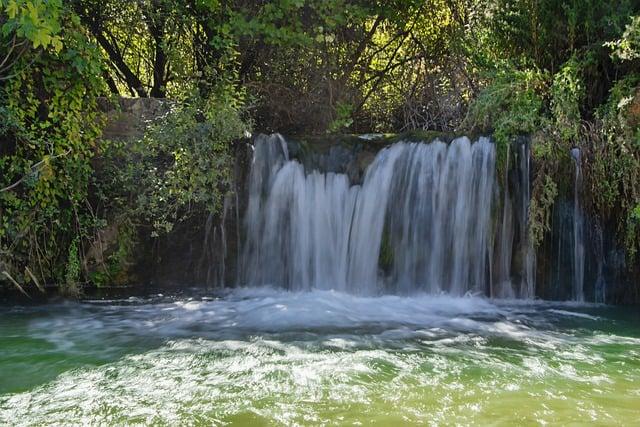As the first snowflakes of winter danced through the air, Mia stood at the edge of the ski slope, her heart racing with excitement. She had forgotten her ski jacket but remembered her trusty hiking jacket, a vibrant blue that had seen her through countless trails. With a shrug, she zipped it up and hit the slopes.
To her surprise, the jacket kept her warm and dry, its breathability allowing her to move freely. As she glided down the mountain, she realized that sometimes, the right gear isn’t about the label but about the adventure it supports.
Table of Contents
- Understanding the Key Differences Between Hiking and Skiing Jackets
- Essential Features to Look for in a Versatile Outdoor Jacket
- Layering Strategies: Maximizing Performance on the Slopes
- Top Recommendations for Jackets That Bridge Hiking and Skiing Needs
- Q&A

Understanding the Key Differences Between Hiking and Skiing Jackets
When comparing jackets designed for hiking and those tailored for skiing, several key differences emerge that can significantly impact your outdoor experience. **Hiking jackets** are typically lightweight and breathable, crafted to handle varying temperatures and exertion levels. They often feature moisture-wicking materials to keep you dry during strenuous activities and may include ventilation zippers to enhance airflow. In contrast, **skiing jackets** prioritize insulation and weather resistance, designed to keep you warm in frigid conditions while also providing protection against wind and snow. These jackets usually come with additional features such as snow skirts, adjustable hoods, and reinforced areas to withstand the rigors of skiing.
Another important distinction lies in the fit and functionality of the jackets. **Hiking jackets** often have a more streamlined fit, allowing for a greater range of motion, which is essential for navigating trails and uneven terrain. They may also include pockets positioned for easy access while wearing a backpack. On the other hand, **skiing jackets** are generally bulkier to accommodate layers underneath and provide extra padding for falls. They often come equipped with specialized pockets for ski passes, goggles, and other gear, ensuring that everything you need is within reach while on the slopes. Understanding these differences can help you make an informed decision about whether a hiking jacket can meet your skiing needs.

Essential Features to Look for in a Versatile Outdoor Jacket
When searching for a jacket that can seamlessly transition from hiking trails to snowy slopes, there are several key features to consider. **Waterproofing** is paramount; look for jackets with a high waterproof rating and sealed seams to keep you dry in wet conditions. Additionally, **breathability** is crucial, especially during high-energy activities like hiking or skiing. Fabrics that allow moisture to escape will help regulate your body temperature and prevent overheating. Consider jackets with **ventilation zippers** for added airflow when needed.
Another important aspect is **insulation**. Depending on the climate, you may want a jacket that offers lightweight insulation for warmth without bulk. Look for options with **removable liners** or **layering capabilities** to adapt to changing weather conditions. **Adjustable hoods and cuffs** can provide extra protection against wind and snow, while **multiple pockets** are essential for storing essentials like snacks, maps, or ski passes. ensure the jacket has a **comfortable fit** that allows for freedom of movement, making it suitable for both hiking and skiing adventures.

Layering Strategies: Maximizing Performance on the Slopes
When hitting the slopes, the right layering strategy can make all the difference in your comfort and performance. Start with a **moisture-wicking base layer** that fits snugly against your skin. This layer should be made from materials like merino wool or synthetic fabrics that effectively pull sweat away from your body, keeping you dry and warm. Next, consider adding an **insulating mid-layer**. Fleece or down jackets work well here, providing essential warmth without adding excessive bulk. This combination allows for flexibility, enabling you to adjust your layers based on changing weather conditions throughout the day.
top off your ensemble with a **waterproof and breathable outer layer**. While a hiking jacket may offer some protection, it’s crucial to ensure it has features tailored for skiing, such as a snow skirt, adjustable cuffs, and ventilation zippers. These elements help to keep snow out and regulate your body temperature during intense activity. Additionally, don’t forget to accessorize with **appropriate headgear, gloves, and socks**. By carefully selecting each layer, you can create a versatile outfit that maximizes your performance on the slopes while ensuring you stay comfortable and protected from the elements.

Top Recommendations for Jackets That Bridge Hiking and Skiing Needs
When searching for the perfect jacket that can seamlessly transition from hiking trails to snowy slopes, consider options that prioritize versatility and performance. Look for jackets made from **waterproof and breathable materials** such as Gore-Tex or similar fabrics, which will keep you dry during unexpected rain showers or snow flurries. Additionally, features like **adjustable hoods**, **ventilation zippers**, and **multiple pockets** can enhance functionality, making it easier to carry essentials whether you’re trekking through the woods or skiing down a mountain.
Another key aspect to consider is insulation. Jackets that offer **synthetic insulation** or **down fill** can provide warmth without adding excessive bulk, allowing for ease of movement in both activities. Opt for jackets with a **snug fit** that can accommodate layering, as this will help regulate your body temperature during varying levels of exertion. Some top recommendations include jackets from brands like **Patagonia**, **The North Face**, and **Arc’teryx**, which are known for their durability and performance in diverse weather conditions. With the right choice, you can enjoy the best of both worlds without compromising on comfort or style.
Q&A
-
Can a hiking jacket keep me warm while skiing?
While hiking jackets are designed for warmth, they may not provide the same level of insulation as dedicated ski jackets. Skiing often involves colder temperatures and wind, so ensure your hiking jacket has adequate insulation and layering options.
-
Is a hiking jacket waterproof enough for skiing?
Many hiking jackets are water-resistant but may not be fully waterproof. Skiing often involves wet snow and potential falls, so look for a jacket with a waterproof rating and sealed seams to keep you dry on the slopes.
-
Do hiking jackets have the necessary features for skiing?
Hiking jackets typically lack ski-specific features like powder skirts, ski pass pockets, and helmet-compatible hoods. If you plan to ski frequently, consider investing in a jacket designed specifically for skiing.
-
Can I layer under a hiking jacket for skiing?
Yes, layering is key! You can wear thermal base layers and insulating mid-layers under a hiking jacket. Just ensure the jacket allows for enough mobility and breathability to keep you comfortable while skiing.
while a hiking jacket can offer some protection on the slopes, it may lack the specialized features needed for skiing. Choose wisely to ensure your comfort and safety, and embrace the adventure that awaits, whether on trails or powder!

大家好,我是彼得潘,專業的手法身體治療師。我喜歡探索和研究各種主題,並透過與人工智慧的合作分享專業、實用、有趣的文章。我們定期進行人工審核,以確保內容的準確性。如果您發現文章中有任何不準確的地方,請隨時與我們聯繫,我們會及時糾正。您可以透過 [email protected] 與我們聯繫。



